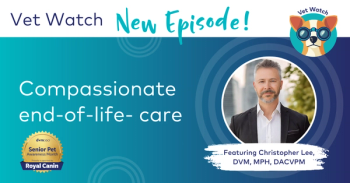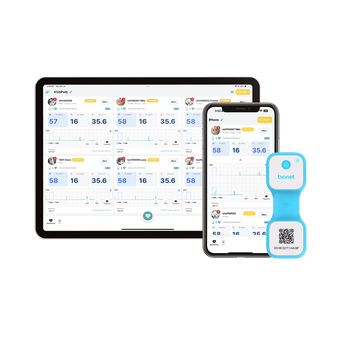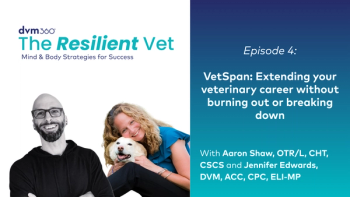
Veterinary scene down under: Veterinary and wildlife research at Synchrotron, and more news
Updates on the veterinarian working at the Australian Synchrotron; and living well at the upcoming Australian Veterinary Association national veterinary conference
At the 39th World Veterinary Association Congress 2024 in South Africa, Mitzi Klein, BVSc, MANZCVS, senior veterinary scientist for the Imaging and Medical Beamline (IMBL), at the Australian Nuclear Science & Technology Organization’s (ANSTO) Synchrotron in Melbourne, presented a poster showcasing the use of Synchrotron advanced imaging techniques to improve anatomical and physiological knowledge of endangered wildlife species. External researchers gain free access to this state-of-the-art research facility through a merit-based process, and Klein’s role is to support the researchers using the IMBL.
“The Australian Synchrotron is a world-class national research facility that uses accelerator technology to produce laser-like beams of light, ranging from infra-red to hard x-rays, that are a million times brighter than the sun. It is one of Australia's most significant pieces of scientific infrastructure, and welcomes more than 1500 national and international researchers every year,” Klein explained exclusively to dvm360®.
“The IMBL and the Micro Computed Tomography (MCT) Beamline form the Imaging Group at the Australian Synchrotron. In a nutshell—we do high resolution x-ray/CT imaging and radiation therapy research. The IMBL is a research tool applicable to a wide range of fields from engineering, materials science, paleontology, cultural heritage to life sciences and more,” continued Klein.
Synchrotrons around the world have different specifications, meaning they have their particular specialties. The IMBL is 150m long and the fixed x-ray beam can be up to 50cm wide and 10cm high. Objects being imaged are moved with robots and other positioning equipment, and rotated in the x-ray beam, whilst collecting very high resolution, high sensitivity images.
“As beamtime is very precious, I am responsible for working with external researchers to refine their project and make it happen. So it involves thinking laterally, and being involved in the research design and knowing what is ‘out there’ to determine what equipment, techniques and procedures could be used, adapted or re-appropriated to best suit the project,” said Klein.
“One exciting project is to do with wildlife imaging, developing a synchrotron imaging repository that is open access for researchers to use. This project has so far imaged fresh cadaver and museum specimens – such as bandiocoots, antechinus, shark head, rhino skull, honey possum and others. There is also research focused on teeth, gastrointestinal contents, bone/muscle/tendon interfaces, osteoporosis, respiratory and circulatory anatomy and physiology – all of which is helping greater understanding about these wildlife species,” she continued.
Klein is also collaborating with researchers in South Africa and the United States, on the Rhisotope Project, which is looking at using radioisotopes to make the Rhinoceros horn radioactive without any harm to the animal—to aid prevention of wildlife trafficking.
“ANSTO is a major producer of medical grade radionucleotides, and as radioactivity is easily picked up at ports throughout the world, it could be an effective way of detecting smuggling of rhino horn – and as a potential deterrent to poachers and end users. More needs to be known about rhino anatomy and physiology - hence the importance of imaging, such as we need images of the skull for dose modeling,” explained Klein.
“Our synchrotron research also has other veterinary applications -with projects on canine osteosarcoma - looking at the irradiation of the tumor using micro-beams of x-rays, and its effects on the vasculature and drug uptake within the tumor, as well as the effects on the surrounding tissues. There is also research planned into canine soft tissue sarcoma – looking at the response to adjuvant treatment, before and after surgical excision.”
With an early career in mixed-animal veterinary practice, Klein then worked at Monash University as a clinical veterinarian looking after research animals, from where she was introduced to her current role at the Synchrotron. “I love discovering new things, learning new things, and every project is different - usually wanting to do something that has never been done before. We are also working on some amazing imaging projects to do with human breast cancer, and dynamic lung imaging, both of which may also have transferable application in veterinary patients,” Klein said.
“Collaboration and networking are so important—to be able to point people to other people who are doing similar amazing things but maybe in a slightly different field, and seeing the incredible things that can come of such sharing of ideas and implementation of new techniques really is the most rewarding part of my job. We are so underutilized by the veterinary profession, mainly as I don't think many know about us, but also because it is often seen as out of reach, and as vets, we don't have the time or expertise to be able to utilize such a facility. I would like to emphasis that you can get teams together to help and that is part of my role. Our research is driven by users and if there are veterinarians out there who want to drive a project, we are here to help them succeed.”
Living Well – the upcoming AVA veterinary conference
The Australian Veterinary Association’s (AVA) annual national veterinary conference will get underway May 27-31 at the Melbourne Convention Center and the theme is ‘Living Well,’ reflecting the aims veterinarians have for patients and themselves. The conference will present a range of topics focused on improving the quality of life for animals with chronic conditions and enhancing veterinary practice to help veterinary professionals achieve longevity and satisfaction in their careers and life.
Australia’s premier veterinary networking conference, this year the AVA are collaborating with the Australian and New Zealand College of Veterinary Scientists (ANZCVS) for the inaugural AVA Conference Research Day showcasing recent veterinary research. The conference also features a full day THRIVE Veterinary Wellness Symposium with thought-provoking wellness topics. Diana Barker,BVSc, MBA, MANZCVS (Small Animal Surgery), AVA president, invited all members of the veterinary community to attend the event.
“I have attended a few conferences over the years, and I can unreservedly say the AVA Conference is an absolute highlight of my year. The annual AVA conference provides a wonderful opportunity to connect with colleagues, exchange ideas and be motivated by inspiring speakers, it has certainly helped shaped my ideas and career growth over the years,” said Barker.
“The breadth and depth of face-to-face learning on offer is impressive and the opportunity to have thought-provoking conversations with colleagues about the future of our profession is enormously rewarding,” she concluded.
Newsletter
From exam room tips to practice management insights, get trusted veterinary news delivered straight to your inbox—subscribe to dvm360.






